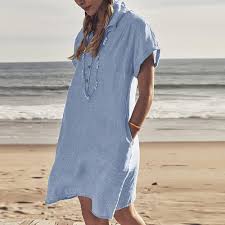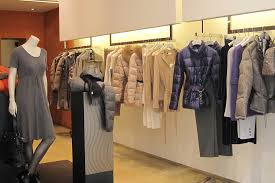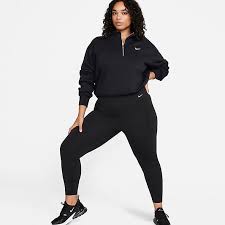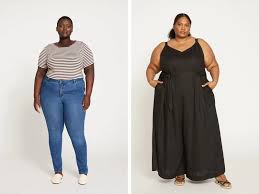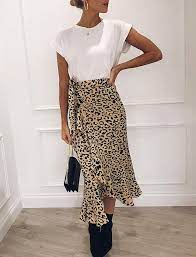Stylish Winter Wear Essentials for Ladies: Stay Warm and Fashionable This Season
The Ultimate Guide to Winter Wear for Ladies
As the temperatures drop and the days get shorter, it’s time to update your wardrobe with stylish and cosy winter wear. From chic coats to snug accessories, there are plenty of options to keep you warm and fashionable during the colder months.
Coats and Jackets
A good quality coat is a must-have in any winter wardrobe. Opt for a classic wool coat for a timeless look, or go for a trendy puffer jacket for added warmth. Don’t forget about stylish trench coats or faux fur jackets to make a fashion statement while staying snug.
Sweaters and Cardigans
Sweaters and cardigans are essential layering pieces during winter. Choose from chunky knits, cable knits, or cashmere sweaters to stay cosy and stylish. Pair them with jeans or skirts for a versatile winter outfit.
Boots and Accessories
No winter outfit is complete without the right accessories. Invest in a pair of stylish boots that are both fashionable and functional, such as knee-high boots or ankle booties. Add scarves, gloves, hats, and earmuffs to complete your winter look while keeping you warm.
Thermal Wear
For extra warmth on chilly days, consider adding thermal wear to your wardrobe. Thermal tops and leggings can be worn under your regular clothes without adding bulk, providing an extra layer of insulation against the cold.
Layering Pieces
Layering is key to staying warm in winter without sacrificing style. Mix and match different pieces like turtlenecks, blouses, vests, and leggings to create stylish layered looks that will keep you comfortable in varying temperatures.
With these essential winter wear pieces in your wardrobe, you’ll be ready to tackle the colder months in style. Embrace the season by mixing fashion with function to create chic outfits that will keep you warm and looking fabulous all winter long.
Seven Essential Winter Wardrobe Tips for Women: Style Meets Warmth
- Layering is key to staying warm and stylish. Start with a base layer, add a sweater or cardigan, and top it off with a coat or jacket.
- Invest in quality winter accessories like scarves, gloves, and hats to keep you warm while adding a touch of style to your outfit.
- Opt for insulated and waterproof boots to keep your feet dry and warm during the cold winter months.
- Choose coats and jackets with proper insulation such as down or wool to ensure maximum warmth without sacrificing style.
- Experiment with different textures like faux fur or wool blends for a chic winter look that also provides extra warmth.
- Don’t forget to protect your skin from the harsh winter elements by using moisturiser and lip balm regularly.
- Consider investing in thermal leggings or tights to wear under skirts or dresses for added warmth without compromising on style.
Layering is key to staying warm and stylish. Start with a base layer, add a sweater or cardigan, and top it off with a coat or jacket.
Layering is essential for staying warm and stylish during the winter months. By starting with a base layer, adding a cosy sweater or cardigan, and finishing off with a stylish coat or jacket, you can create versatile outfits that not only keep you snug but also make a fashion statement. This strategic layering technique allows you to adjust your clothing according to the fluctuating temperatures throughout the day while maintaining a chic and put-together look.
Invest in quality winter accessories like scarves, gloves, and hats to keep you warm while adding a touch of style to your outfit.
Investing in quality winter accessories such as scarves, gloves, and hats is a smart way to stay warm and stylish during the colder months. Not only do these accessories provide essential protection against the chill, but they also add a touch of sophistication to any outfit. Opt for luxurious materials like cashmere or wool for added warmth and elegance, ensuring that you not only stay cosy but also make a fashion statement wherever you go.
Opt for insulated and waterproof boots to keep your feet dry and warm during the cold winter months.
When it comes to selecting the perfect footwear for winter, opt for insulated and waterproof boots to ensure your feet stay dry and warm throughout the cold winter months. These boots not only provide much-needed insulation to keep your feet cosy but also offer protection against wet and snowy conditions, allowing you to navigate through winter weather with comfort and style. Investing in a pair of high-quality insulated and waterproof boots is a practical choice that will keep your feet happy and comfortable in any winter adventure.
Choose coats and jackets with proper insulation such as down or wool to ensure maximum warmth without sacrificing style.
When selecting coats and jackets for the winter season, it is essential to opt for pieces with adequate insulation, such as down or wool. These materials provide excellent warmth while still allowing you to maintain a stylish appearance. By choosing outerwear with proper insulation, you can stay cosy and comfortable in chilly weather without compromising on fashion. Whether it’s a classic wool coat or a trendy puffer jacket, prioritising insulation ensures that you can brave the cold in style.
Experiment with different textures like faux fur or wool blends for a chic winter look that also provides extra warmth.
To elevate your winter wardrobe, consider experimenting with various textures such as faux fur or wool blends. These luxurious fabrics not only add a touch of sophistication to your outfit but also offer exceptional warmth during the colder months. Incorporating different textures like faux fur accents or cosy wool blends can instantly elevate your winter look, ensuring you stay stylish and snug throughout the season.
Don’t forget to protect your skin from the harsh winter elements by using moisturiser and lip balm regularly.
During the winter months, it’s crucial for ladies to protect their skin from the harsh elements by incorporating a regular skincare routine. Applying moisturiser and lip balm daily can help combat dryness and keep skin hydrated and supple. The cold weather can strip the skin of its natural oils, leading to dryness and irritation, so it’s essential to nourish and protect the skin to maintain a healthy glow throughout the winter season. By making moisturiser and lip balm a part of your daily beauty regimen, you can ensure that your skin stays soft, smooth, and well-nourished despite the challenging winter conditions.
Consider investing in thermal leggings or tights to wear under skirts or dresses for added warmth without compromising on style.
When it comes to staying warm during the winter months, a smart tip for ladies is to invest in thermal leggings or tights. These versatile pieces can be worn under skirts or dresses, providing an extra layer of insulation without sacrificing style. By incorporating thermal leggings or tights into your outfit, you can stay cosy and comfortable while still looking chic and fashionable. It’s a practical and stylish solution for keeping warm during the colder days of winter.

